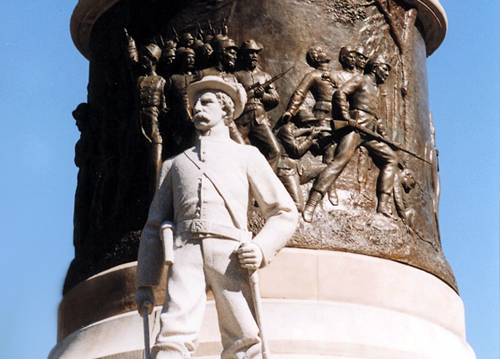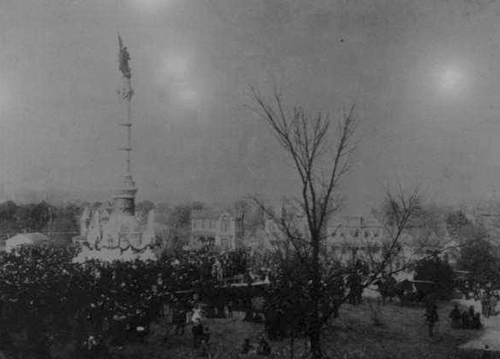Article by Rick HarmonAlabama's Confederate Monument
December 7, 1898

Almost everyone who has driven past the Capitol has seen Alabama's Confederate Monument, but few realize what it actually is and even fewer what is under it.
First of all, although it is in Alabama, it is not really Alabama's Confederate Monument.
While many Southern states have Confederate memorials, Alabama's monument is not just for Alabama's Confederate soldiers. As the first capital of the Confederacy, Montgomery's monument was built for soldiers from the entire Confederacy.
The Ladies Memorial Association worked tirelessly to raise nearly $46,000 to build the monument to honor Confederate soldiers who died in the war. In 1886, Jefferson Davis himself helped lay the cornerstone for the monument, just a few feet from where he took the oath of office as president of the Confederacy.
Former Confederates from throughout the South came to Montgomery on Dec. 7, 1898, to witness the dedication of the 85-foot-tall structure, designed by Alexander Doyle.
The monument on the north side of the Capitol is topped with a bronze figure honoring patriotism and Southern womanhood. Below this figure, Fred Barnicoat created a granite statuary representing the four branches of the Confederate armed forces. A bronze band encircles the column.
Beneath the monument are treasures -- treasures not of wealth, but of history. Many former Confederate soldiers presented everything from diaries and photos to regimental flags and uniforms to be buried under the cornerstone of the monument.
Items placed beneath the cornerstone include everything from Gen. Joseph Wheeler's battle flag and a bundle of books from Jefferson Davis' daughter, Winnie, to newspapers from throughout the state (including an Oct. 7, 1864, Montgomery Advertiser) and a list of course studies used by Montgomery public school teachers in 1885.
These, along with Confederate postage stamps, regimental badges, and different denominations of treasury notes and bonds were placed in a zinc box. The lid was cemented in lead, and the box was placed under the cornerstone, where it has remained for more than a century.
 |
Photograph of the dedication provided by David Allen |
|